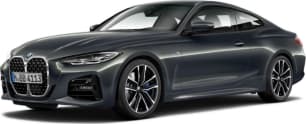The 440i coupe toe the line between sports car and luxury vehicle very, very well.
The straight-line performance is definitely there thanks to its in-line six-cylinder unit, which is one of our favourite engines in any vehicle – period.
From top to bottom, the 3.0-litre unit is absolutely delicious. Maximum torque kicks in just above idle and remains on tap deep into the top end, at which point a fleeting moment of peak power is just 500rpm away. Needless to say, acceleration is strong.
Remarkably, the engine’s twin-scroll turbo exhibits next to no lag, making for a unit that you truly want to wring out. That said, don’t expect aural pleasure when you do so, as the sound it generates is lacklustre. Yep, no enticing crackles or pops are heard here.
The automatic transmission ties everything together beautifully, providing timely, quick and smooth gear changes on the regular, even without its Sport mode engaged. And, of course, there are paddle-shifters on hand if you want to take matters into your own hands – literally.
Given the 440i coupe’s apparent performance bent, you’d be forgiven for thinking it rides like an unforgiving sports car. Well, the good news is it doesn’t.
Consisting of MacPherson-strut front and multi-link rear axles with adaptive dampers, its independent suspension set-up stands up really well to Australian roads.
While potholes and coarse-chip roads would usually be met with hesitation, the 440i coupe silences the doubters with its composed ride. Can you feel them? Yes, but they’re relatively muted, especially in a car with sporty aspirations, like this one.
Cornering is a lot of fun, too, thanks to excellent body control. Tip its 1555kg kerb weight into a corner with intent and you’re quickly reminded why SUVs are nowhere near this fun to drive.
Simply put, the 440i coupe loves a twisty stretch of road, where its M Sport brakes (front: four-piston fixed callipers, rear: two-pot floating stoppers) and traditional rear-wheel-drive dynamics come out to play.
This experience is enhanced by its superb electric power steering, which is speed-sensitive, meaning it’s quick at low speed, for improved manoeuvrability, and ‘slow’ at high speed, for improved stability.
We absolutely adore this particular system, mainly because of its perfect weighting and surprising amount of feel. And in a surprise to no-one, it also turns in really well, too.
Of course, if you want to take the 440i coupe’s handling to the next level, you can engage its Sport drive mode, which stiffens up the adaptive dampers for even flatter cornering and adds more heft to the electric power steering. But we’d say both are unnecessary.




